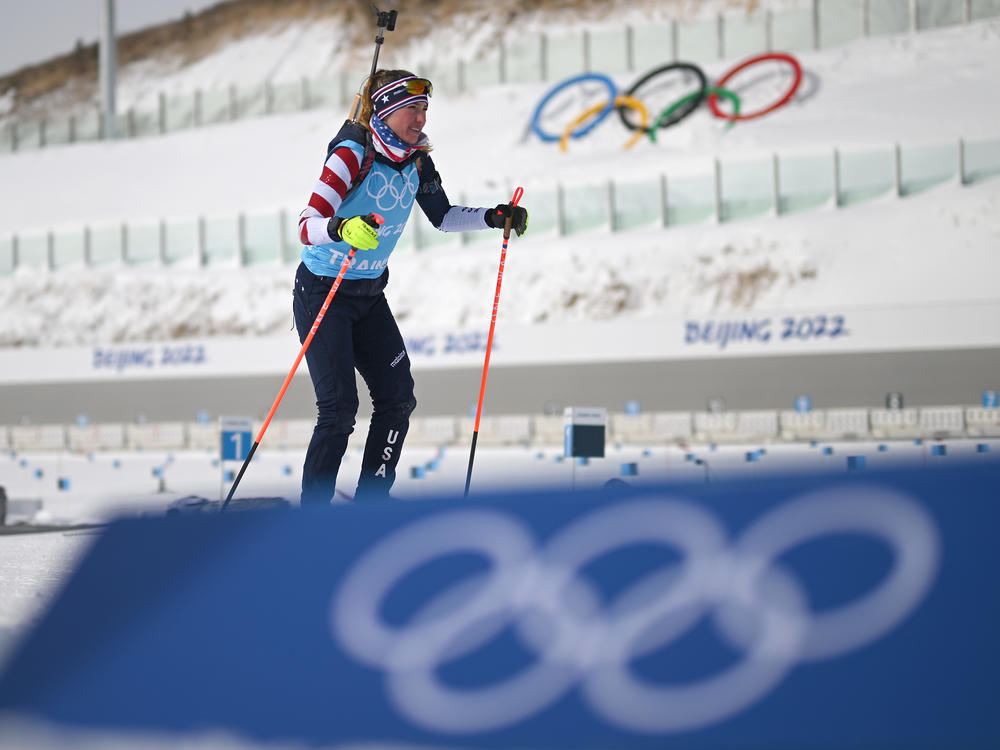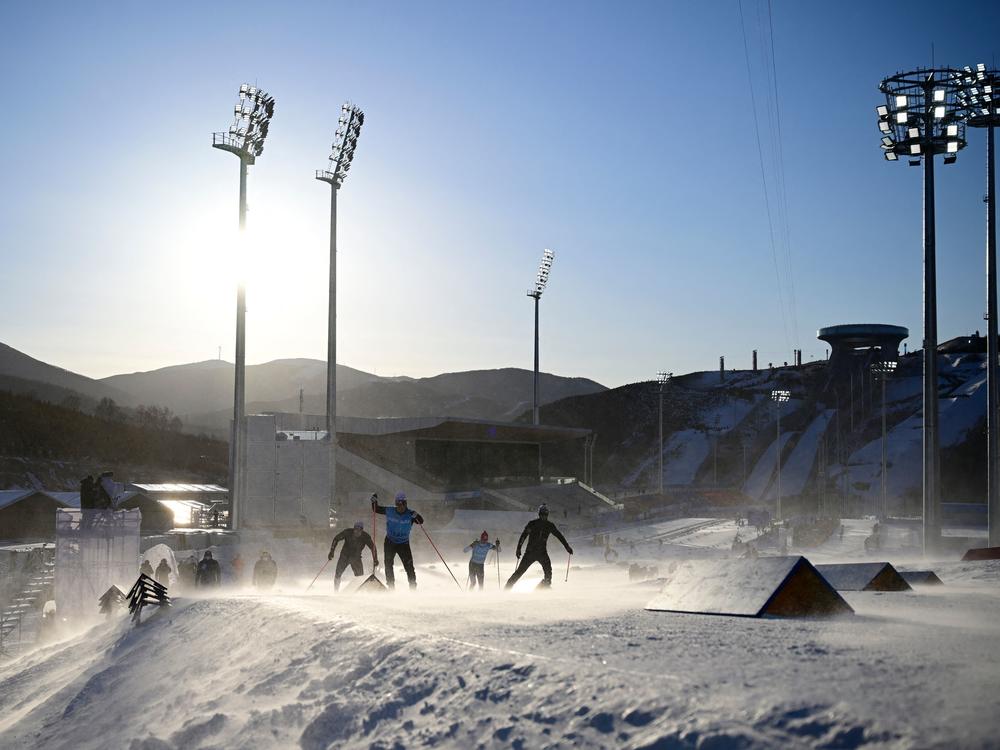Section Branding
Header Content
U.S. biathletes focus on process in their quest for a first-ever Olympic medal
Primary Content
BEIJING — Saturday marks the first day medals are awarded at the 2022 Winter Olympics.
And it's the first chance at these Games for the U.S. Biathlon team to break through.
American biathletes have the distinction of being the only U.S. Olympians who've never stood on the medal stand.
Innovations since the last Olympic Games are creating hope that the U.S. can finally get a top three finish in one of the combined cross-country skiing and target shooting events, traditionally dominated by Europeans.
Biathlon like baseball
U.S. biathlete Clare Egan came to China ready for the question — why no U.S. medals? — and armed with an answer that people who know nothing about her quirky sport might understand.
"In baseball," Egan said, "even the very, very best hitters are getting hits three out of 10 times while they're at bat."
Meaning, failure happens more than success.
Same in biathlon, Egan says. For the past decade, the U.S. has had the athletes who've competed with the best, and succeeded.
Lowell Bailey was a 2017 World Champion. Susan Dunklee, who's in China for her third and final Olympics, has won two World Championship silver medals. Before her, Tim Burke won one. But neither they, nor any other American biathletes, have been able to get the timing just right at the Olympic Games.
"We have maybe 30 races over the course of the winter," Egan said, "but the Olympics are once every four years and just a couple of competitions. So statistically, the likelihood that we might land on the podium on any given day is quite low."
And before you say, well all those Norwegians and Germans don't seem to have any trouble winning Olympic medals, consider this: biathlon, in those and other European countries, is hugely popular and heavily funded. There are hordes of Europeans in international competitions so statistically those countries have a better chance of medalling.
But they too can...strike out.
In 2018, Finland's Kaisa Leena Mäkäräinen, the women's World Cup leader going into the Winter Olympics, got skunked at the Games.
"That's not a surprise to us," Egan said, "because it's like baseball."
Biathlon's unique challenge
Indeed, the unique nature of biathlon can get you, whether you're from a powerhouse country or the U.S., with its little-engine-that-could attitude.
"Biathlon is a very unpredictable sport," said Max Cobb, president of US Biathlon.
It combines cross country skiing and target shooting - it's the COMBINES part that makes it really hard. Cobb says no matter how much of a marksman you are with the .22-caliber biathlon rifle, try doing it lying on your stomach, after charging around the ski course and getting your heart rate up to 170.
"It's incredibly challenging," Cobb said. "From the prone position, you're [trying to hit a target] the size of a golf ball from 165 feet away. And you're trying to take a shot at least every two seconds if not less."
The unpredictability happens, for the most part, on the shooting range. And it can have a drastic effect on the overall results.
Coming into the range, a biathlete may be leading the event, but if their shooting is off, because they can't control a heaving chest, or gusting winds, or falling snow, the lead can vanish.
Changes in the last four years
Since the 2018 Olympics, when the U.S. finished medal-less again, Cobb says the program has taken steps to end the drought.
They've been working more frequently with Matt Emmons, a former summer Olympic gold medalist in shooting. They did some innovative things with athlete's skis.
"The big thing in ski preparation for Nordic skiing," Cobb said, "is to break up the surface tension. Essentially, that exists when the ski glides over the snow and a thin film of water is created. With all the different types of snow crystals that there are and the different temperature and humidity parameters, there's almost an unlimited number of ski preparation techniques that we use to try and essentially improve glide by breaking up the surface tension of the snow."
That includes changes to the structure of the ski base.
"It's our most closely guarded secret," Cobb said, "but it's been really effective."
And perhaps recent results bear all this out.
"We had a couple of really amazing performances on our team at our last World Cup [event] before the Olympics," Egan said. "Paul [Schommer of the men's team] had a ninth place [in the 20km Men's Individual race] that was a big personal best for him. His first top-10 at a World Cup. We also had our best women's relay finish since the early 1990's. We finished fifth place and that was very exciting for us."
And then Egan had her second best World Cup result ever, placing fourth in the 15km individual race in Antholz, Italy.
"All of that was really exciting," Egan said. "I think it showed that our team is coming into form at the right moment."
So will Egan or any of the other surging Americans be the break through biathletes at the Beijing Olympics?
Egan prefers not to talk about that - in fact, it's a U.S. team strategy not to.
"One of the things we say in biathlon," Cobb said, "is the more you want it, the less likely you are to achieve it. It really has to be process-focused here. And that's really our goal for these Games."
A sport psychologist works with the athletes on mental focus and techniques to re-focus when the mind drifts toward outcome rather than the process.
Especially during the shooting phase.
"If you start thinking about what it means to hit those targets," Cobb said, "they get an awful lot harder to hit. If you think about it too much, you're going to miss."
So U.S. biathletes will continue to hear the questions — why no medals? — but keep their minds and eyes on the ski tracks and shooting targets in front of them.
And at the end of the process, maybe one, or more, can finally smack that biathlon home run.
Copyright 2022 NPR. To see more, visit https://www.npr.org.


